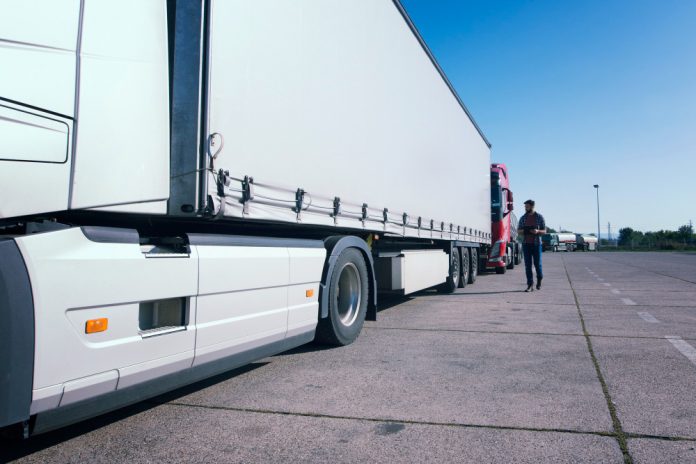The Earliest Cherry Blossom Season in 1,200 Years Is Here Due to Climate Change
For well over a thousand years, cherry blossoms in Japan have held the scent of spring and reflected the transient beauty of nature itself. Today, these falling flowers also carry the gravity of climate change.
In 2021, after an unusually warm spring, Kyoto has burst into color far sooner than expected. To date, this is the earliest cherry blossoms in the city have bloomed in more than 1,200 years. We know that because imperial court documents and ancient diary entries on the nation’s cherry blossom festivals can be traced back to 812 CE. In all that time, the earliest blooming date was March 27 in the year 1409. Over 600 years ago!
Weather affects the operation of Canadian trucking systems in many ways…
- Trucks slowed by a wet surface.
- Trucks delayed by high winds.
- Trucks delayed by closed roads due to flooding.
- Roads closed due to presumptive major storms.
- Clogged traffic from winter storms (collisions)
- Premature deterioration of our transportation infrastructure.
- Loss of revenues….loss of life.
“Climate change poses complex and interconnected risks to people and the planet, so it should be no surprise that Canada is subject to climate change risks that span almost every facet of life” says Eric M. Meslin, PhD, FCAHS President and CEO, Council of Canadian Academies.
The CCA formed an expert panel on Climate Change Risks and Adaptation Potential.
The Panel identified 12 major areas of climate change risk facing Canada from a national perspective, all of which could involve significant losses, damages, or disruptions over the next 20 years.
In the Panel’s judgment… The Top Six Areas of Climate Change Risk Facing Canada
Physical Infrastructure Risks to physical infrastructure in Canada from extreme weather events, such as damage to homes, buildings, and critical infrastructure from heavy precipitation events, high winds, and flooding; increased probability of power outages and grid failures; and an increasing risk of cascading infrastructure failures
Coastal Communities Risks to coastal communities in Canada, including damage to coastal infrastructure, property, and people from inundation, saltwater intrusion, and coastal erosion due to sea-level rise and storm surges.
Northern Communities Risks to northern communities and people in Canada, including damage to buildings, roads, pipelines, power lines, and airstrips due to thawing permafrost; reduced or disrupted access to communities and facilities due to warmer temperatures; and increased risks from marine accidents due to increased marine traffic and reduced summer sea-ice extent.
Human Health and Wellness Risks to human health and wellness in Canada, including adverse impacts on physical and mental health due to hazards accompanying extreme weather events, heatwaves, lower ambient air quality, and increasing ranges of vector-borne pathogens.
Ecosystems Risks to Canadian ecosystems and species, including threats to biodiversity, ecosystem resilience, and the ability of ecosystems to provide a range of benefits to people such as environmental regulation, provision of natural resources, habitat, and access to culturally important activities and resources.
Fisheries Risks to Canadian fisheries and fish stocks, including declining fish stocks and less productive/resilient fisheries due to changing marine and freshwater conditions.
NOTE: All of the before mentioned require the trucking industry.
In spite of all the risks to Canadian truck drivers due to weather unpredictability the industry is still expected to complete their tasks….even in chaos.
Climate change is affecting the existing road and rail infrastructure in the Canadian Shield. Melting permafrost and unusual storms have caused infrastructure gaps to emerge and exposed the networks to greater maintenance. New methods and materials are being tested to stabilize these structures, but this does not lower the costs. Gravel roads in the Canadian Shield average about $3 million per kilometer to build.
Since its inception in 1984, the Transport Institute has been involved in northern transportation studies. The impact of climate change has been addressed for all modes of transport. The Associates of the Transport Institute have established research records in sustainable transport, northern transport, and climate change.
The evidence of climate change points to a growing threat for the people living in remote northern communities. As climate variability grows stronger, the seasonal road transportation systems in the North are becoming less reliable. Half the useful season of the Winter Road network has been lost since 1996, and is predicted to shrink shorter. Even in weak El Nino years, like 2019, the ability of ice road truckers to reach remote communities becomes more uncertain.
Preparation, Planning and Placement are the 3 P’s to surviving unpredictable climate change. Unpredictable weather calls for predictable responses and resources.
Preparation and Planning requires you to decide and record when, how and what to do in a unpredictable weather event. (maybe record previous events on a Calendar) Double-check the alternate routes and the additional parking locations. Have them all plotted on GPS.
All year round floods or tropical storms in the fall all at the hands of Mother Nature. Make these plans in advance where road construction is being planned. Always carry emergency gear and tools appropriate to the season. Always have a reliable response when faced with unreliable weather conditions.
The important element of preparation and planning are reliable resources to turn to for accurate information. Your cell is your best resources carrying a list of phone numbers and websites for up-to-date reports on local weather, road closures, road construction and emergency notifications, such as during floods and storms. There are several helpful weather apps…visit your Play Store or Apple Store for information.
Finally…. Placement. Always know your surroundings. Place yourself in the most defensible position possible. Keep your eyes to the skies occasionally and maybe even try to envision what an overhead drone might see ahead. Note: Birds eye view and sensory perception should be added to the qualities of the modern climate change trucker. Adding to their already huge list of Super Powers necessary for the future.



















